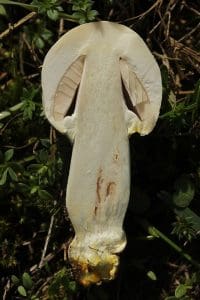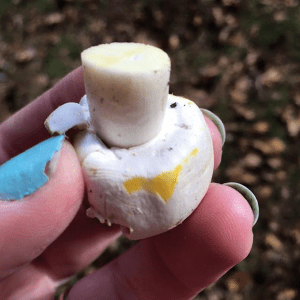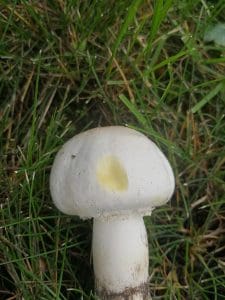Yellow Stainer / Summer/ Autumn/ Toxic
The Yellow Stainer Mushroom is the only agaric we find out in the fields that we need to be wary of, it actually causes the most number of recorded sicknesses in the UK as people pick it thinking it’s a horse mushroom.
Common Name
Yellow Stainer
Botanical Name
Agaricus Xanthoderma
Meaning of Botanical Name
Xanthodermus comes from the greek meaning yellow skinned
Family
Agaricaceae
Known Hazards
Causes severe garstric upset, stomach cramps, vomiting, diarrhoea and sweating
Could be confused with
Horse Mushroom (agaricus arvensis) which bruises more slowly and only slightly yellow, the flesh of horse mushroom smells of aniseed rather than of iodine.
Please find the full ID guide for Horse Mushrooms here
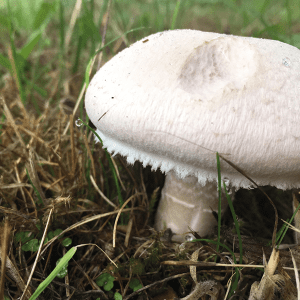
Range and Distribution
The Yellow Stainer can be found throughout Britain and Ireland and can also be found in other European countries from northern Scandinavia down to the Mediterranean. This mushroom is also recorded in North America.
Habitat
Open grasslands, under hedges.
Our Yellow Stainer Mushroom Foraging Video
Physical Characteristics for the Yellow Stainer Mushroom
Caps
Initially dome-shaped caps but usually with a flat top, the caps are pure white and matt, later greying, caps grow to between 5 and 15cm diameter at maturity, and they quickly turn bright yellow when bruised.
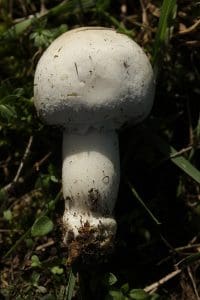
Gills
Gills start off pale salmon pink and turn dark chocolate brown and eventually black with age, they are crowded and free of the stem.
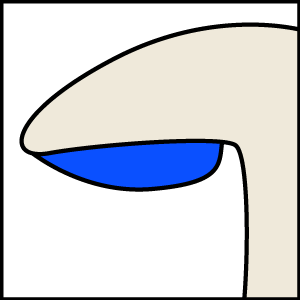
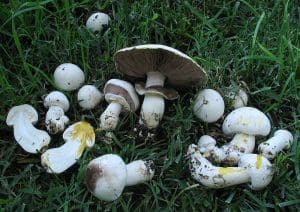
Stem
The stem has a double ring (skirt) which when still attached to the cap looks like a cogwheel pattern
Flesh stains a pale yellow colour when bruised
Spores
Very Dark Brown
Edible Use
This is not an edible mushroom
Extra notes:
After finding many of these I find that some specimens don’t turn yellow quite as quickly as others – I’ve not turned to what seems to be the fail-safe option of putting this mushroom in the microwave for 20 seconds which speeds up the yellowing process massively and can help distinguish the difference between this and the horse mushroom in a very visual way.




